The Mellow Bakers’ journey through Bread: A Baker’s Book of Techniques and Recipes by Jeffrey Hamelman officially came to an end last month, but we’re not starting the next book until April so I decided to work my way through some of the breads I missed.
This Semolina bread is similar to Semolina (Durum) Bread in that it includes a flying sponge; however, this one also includes a grain-and-seed soaker.
I made some substitutions to the grains in the soaker. I used millet flour instead of millet grains and added some amaranth grains. I also used a combination of all-purpose and bread flour rather than just bread flour.
In addition, I changed the process a bit to fit in with my schedule. After the bulk fermentation, I shaped the loaves, placed them in Banneton baskets and let them proof in the refrigerator overnight.
Semolina (Durum) Bread with a Whole-Grain Soaker
Makes: 2 Large Loaves
Adapted from Bread: A Baker’s Book of Techniques and Recipes by Jeffrey Hamelman
Soaker:
- 2.6 oz (5/8 cup) coarse cornmeal
- 1.9 oz (3/8 cup) millet flour
- 1.9 oz (3/8 cup) sesame seeds (I used a mixture of white, tan and black sesame seeds)
- 1 T amaranth grains
- 8 oz (1 cup) water, boiling
Sponge:
- 6.4 oz (1 1/2 cups) durum flour
- 3.2 oz (3/4 cup) bread flour
- 3.2 oz (3/4 cup) all-purpose flour
- .9 oz (1 1/8 cups) water
- .17 oz (1 1/2 tsp) yeast
Final Dough:
- 9.6 oz (2 1/8 cups) semolina flour
- 4.8 oz (1 cup + 1 T) bread flour
- 4.8 oz (1 cup + 1 T) all-purpose flour
- 8.3 oz (1 cup) water
- .7 oz (1 T + 1/2 tsp) salt
- 14.4 oz (all of above) soaker
- 1 lb, 6.2 oz (all of above) sponge
Directions:
1) Make the Soaker:
At least 4 hours before mixing the final dough, pour boiling water over the soaker grains. Cover the soaker with plastic to prevent evaporation, and let stand at room temperature.
2) Make the Sponge:
Mix the semolina (durum) flour, bread flour, all-purpose flour, water, and yeast until thoroughly incorporated. The sponge will be fairly loose.
A sponge temperature of 78 to 80 degrees F. is required to allow the sponge to ripen fairly quickly. It should be ripe after about 1 1/2 hours, when it will be on the verge of collapse.
3) Mix the Dough:
Place all of the ingredients in the mixing bowl, including the soaker and sponge. In a spiral mixer, mix on first speed for 3 minutes in order to incorporate the ingredients. Check the dough consistency and make corrections as necessary. Turn the mixer to second speed and mix for about 3 minutes.
The dough should be of medium consistency, with a resisting tug when pulled on. Desired dough temperature is 76 degrees F.
4) Bulk Fermentation:
Cover the dough with plastic wrap and let it bulk ferment for 1 1/2 hours.
5) Fold the Dough:
Fold the dough after 45 minutes of bulk fermentation and place it back in the bowl to ferment for another 45 minutes.
6) Divide and Shape the Loaves
Divide the dough into 2 equal pieces, about 1.5 pounds each. Preshape lightly into rounds and place on a lightly-floured work surface, seams up. Cover the rounds with plastic.
When the dough has relaxed sufficiently (10 to 20 minutes), shape into tight round or oval loaves. I did one of each and sprayed the top of the loaves with water and sprinkled them with raw sesame seeds.
Place the loaves into floured bannetons or on lightly floured baker’s linen and cover with plastic.
7) Final Fermentation:
Proof the loaves for approximately 1 to 1 1/2 hours at 75 degrees F. At this point, it was late so instead of letting the loaves proof on the counter, I covered the baskets with a linen towel and placed them in the refrigerator to retard overnight.
The next morning, I took the loaves out of the refrigerator and let them warm up to room temperature.
8) Prepare the Oven for Hearth Baking:
Prepare the oven for hearth baking by placing a baking stone on the middle rack of the oven and a steam pan underneath. Then preheat the oven to 475 degrees F.
9) Score the Loaves:
Invert the loaves onto a baking sheet covered with parchment paper. Then score the loaves in the desired pattern. I scored an X in the round loaf and a slash down the middle on the oval loaf.
10) Baking the Loaves:
Once the oven is preheated, slide the breads (on the parchment paper) directly onto the baking stone and pour 1 cup of water in the steam pan. After 30 seconds, open the door, spray the walls with water, and close the door. Repeat twice more at 30-second intervals.
Bake the bread for 15 minutes, then lower the oven setting to 450 degrees F. Continue baking for 20 to 30 minutes more. Check the breads during the bake and rotate them 180 degrees for even baking if necessary.
11) Cooling and Slicing the Loaves:
Remove the loaves to a wire rack to cool completely before slicing and serving.
This bread has been YeastSpotted. Please visit Wild Yeast to view all of the lovely breads in the weekly roundup.
I enjoyed making this bread. It tastes okay, but I think it could be improved. It’s a dense bread and I don’t mind that; however, the grains seem to overwhelm the flavor of the bread. I think letting the grains soak overnight instead of just 4 hours and using an overnight sponge rather than a flying sponge would improve the flavor. I might also prefer sifted cornmeal in the soaker rather than the coarse cornmeal the formula called for.

Mellow Bakers was started by Paul at Yumarama. We’re baking breads from Bread: A Baker’s Book of Techniques and Recipes by Jeffrey Hamelman.
Happy Baking!
Cathy
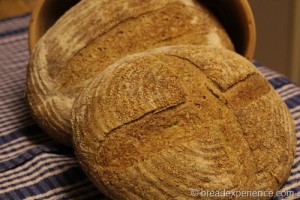

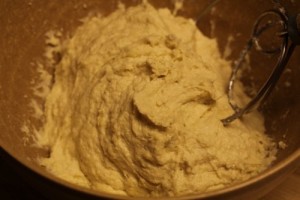
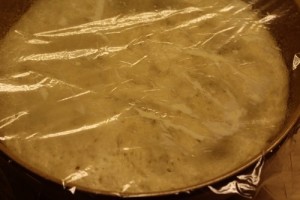
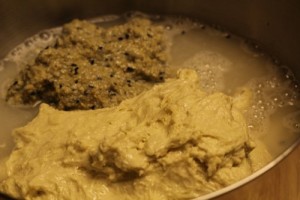
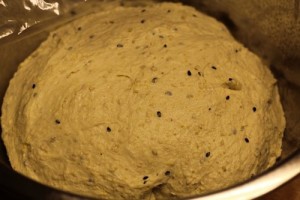
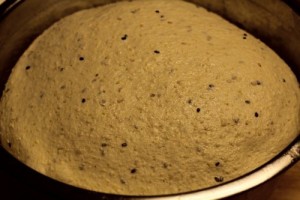
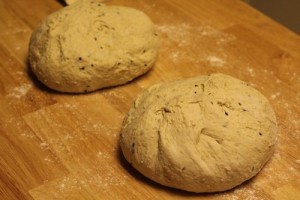
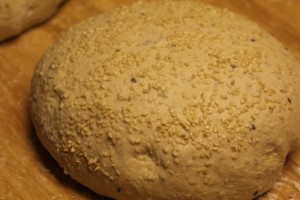
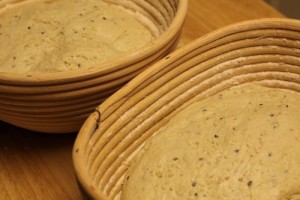
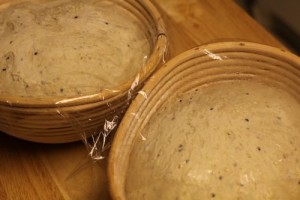
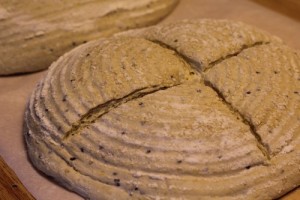
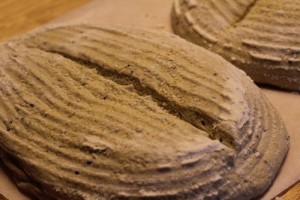
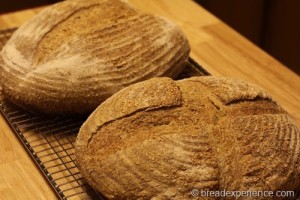
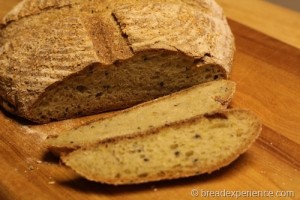
Leave a Reply